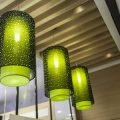Introduction to Smart Lighting in Heritage Settings
The integration of smart lighting systems is becoming an increasingly popular choice among homeowners, and this trend is gradually making its way into the unique context of British heritage properties. As technology evolves, smart lighting offers significant advantages in terms of energy efficiency, convenience, and customisation. However, for owners of listed buildings and historic homes across the UK, embracing such innovation comes with a distinct set of challenges and responsibilities. The need to balance cutting-edge solutions with the careful preservation of architectural character is paramount. This article explores how smart lighting can be thoughtfully incorporated into heritage settings, providing both modern comfort and continued respect for the nation’s rich architectural legacy. By considering both the potential benefits and the sensitivities involved, we aim to guide British homeowners towards making informed decisions that uphold the value and integrity of their historic homes.
Maintaining Architectural Integrity
When integrating smart lighting into British heritage homes, maintaining the architectural integrity of these treasured properties is paramount. Modern lighting systems can provide efficiency and flexibility, but it is essential to respect original features such as ornate cornices, wood panelling, and historic plasterwork. Below are practical guidelines for achieving a seamless blend of innovation and preservation.
Discreet Cabling Solutions
The routing of new cabling should be as unobtrusive as possible to avoid damaging or altering original structures. Consider running cables along existing service voids, behind skirting boards, or within ceiling roses where feasible. For listed buildings, always consult with conservation officers before commencing work to ensure compliance with regulations.
| Area | Recommended Cabling Approach |
|---|---|
| Ceilings with Decorative Plasterwork | Utilise surface-mounted conduit painted to match surroundings or wireless alternatives |
| Wood Panelling | Run cabling in existing gaps or use ultra-flat adhesive cable trays |
| Masonry Walls | Employ wireless switches or sensors to eliminate the need for chasing walls |
Wireless Solutions for Heritage Properties
Wireless lighting controls are an excellent choice for heritage homes, minimising invasive works. Systems such as Zigbee or Z-Wave allow remote operation without new wiring, and battery-powered switches can be discreetly fixed using non-permanent adhesive pads. These solutions offer flexibility while reducing impact on original features.
Benefits of Wireless Lighting Systems
- No need for extensive drilling or chasing into walls
- Easily reversible if future owners wish to restore the property to its prior state
- Integration with smart home platforms for energy management and convenience
Reversible Installations: Best Practices
Always prioritise reversibility when installing modern lighting in heritage settings. Use fixtures that can be removed without trace, such as clip-on fittings or plug-in lamps. Keep all original hardware safely stored so that any changes made can be undone with minimal disruption.

3. Energy Efficiency and Period Charm
One of the most significant challenges when upgrading lighting in British heritage homes is striking a balance between energy efficiency and the preservation of period character. Many listed properties and older buildings across the UK were constructed long before modern electrical standards, often relying on inefficient incandescent bulbs and outdated wiring systems. Integrating smart lighting offers an opportunity to dramatically reduce energy consumption, aligning with contemporary sustainability goals while maintaining—or even accentuating—the home’s historic charm.
Smart lighting solutions, such as LED retrofits and intelligent dimming controls, can be carefully selected to replicate the warm glow traditionally associated with period interiors. These technologies are available in designs that mimic classic candle bulbs or Victorian-style fittings, ensuring that any upgrade remains sympathetic to the architectural integrity of the property. In addition, advanced control systems allow for precise scheduling and adaptive illumination, meaning lights can be automatically turned off or adjusted according to occupancy or daylight levels—substantially reducing unnecessary energy use without compromising ambience.
Retrofitting does not have to mean sacrificing original features; in fact, discreet installation techniques enable homeowners to retain decorative ceiling roses, ornate cornices, or vintage wall sconces. For example, wireless switches and app-based controls eliminate the need for invasive rewiring, preserving both plasterwork and panelling. With thoughtful specification and attention to detail, it is possible for British heritage homes to enjoy all the benefits of cutting-edge efficiency while celebrating their distinctive period features—a win-win for homeowners and history alike.
4. Navigating Listed Building Regulations
Integrating smart lighting into British heritage homes, particularly those with Grade I and II listed status, requires careful navigation of UK regulations designed to protect historic character. The Planning (Listed Buildings and Conservation Areas) Act 1990 governs alterations in such properties, making it essential for homeowners and contractors to understand the legal landscape before undertaking any electrical or lighting upgrades.
Understanding Consent Requirements
Any changes that might affect the character of a listed building—including rewiring, installing new fixtures, or embedding control systems—require Listed Building Consent from the local planning authority. Failing to obtain consent can result in enforcement action or even criminal prosecution. The table below summarises key considerations:
| Aspect | Grade I | Grade II |
|---|---|---|
| Consent Required for Lighting Alterations | Always | Usually |
| Engagement with Conservation Officers | Essential at all stages | Strongly recommended |
| Flexibility for Modern Technology | Very limited; solutions must be discreet and reversible | Slightly more flexibility but still constrained by heritage value |
| Documentation Needed | Detailed plans, heritage impact assessment, specification of materials and methods | Simplified reports may suffice but detailed plans preferred |
Liaising with Conservation Officers
Successful projects often hinge on early and transparent communication with local conservation officers. These experts can advise on best practices for installing smart lighting without compromising period features such as mouldings, lath-and-plaster ceilings, or original timberwork. Proposals that emphasise minimal intervention and reversibility are generally viewed more favourably.
Best Practice Recommendations
- Avoid surface-mounted cabling: Use existing voids or routes where possible to conceal wiring.
- Select sympathetic fixtures: Choose luminaires and controls that complement historical aesthetics or are invisible when not in use.
- Document every stage: Keep thorough records of decisions, materials used, and installation methods for future reference or inspections.
- Pilot installations: Conduct a trial in one area to demonstrate minimal impact before full implementation.
The Role of Heritage Consultants
For complex projects—especially in Grade I properties—it is advisable to engage a specialist heritage consultant. Their expertise bridges the gap between technological ambition and regulatory compliance, ensuring that modern comforts do not come at the expense of historical integrity.
5. Retrofitting Best Practices
Step 1: Conducting an Initial Assessment
Begin by thoroughly assessing the heritage property, noting original fixtures, wiring routes, and areas with historical value that require special care. Engage with a conservation specialist to ensure proposed works comply with UK heritage regulations and do not compromise protected features.
Step 2: Selecting Compatible Smart Lighting Systems
Choose smart lighting solutions designed for retrofit applications, prioritising wireless systems such as Zigbee or Z-Wave to minimise invasive cabling. Look for fittings that replicate period-appropriate aesthetics or allow existing fixtures to be upgraded discreetly, preserving the home’s character while introducing modern control options.
Step 3: Planning Wiring and Power Solutions
Work with an electrician experienced in heritage construction methods. Where possible, use existing conduit runs and voids behind skirting boards or within floorboards to conceal new wiring. For listed buildings, consider battery-powered switches or low-voltage solutions approved for sensitive installations.
Step 4: Installation Tips for Heritage Properties
Install devices using reversible fixings and avoid drilling into decorative plasterwork or stone. Use adhesive cable clips or surface-mounted trunking painted to match wall finishes. Fit wireless controllers in locations that mirror traditional switch placements for intuitive use by occupants.
Step 5: Testing and Commissioning
Once installed, test each smart lighting component to ensure reliable connectivity—thick masonry walls may require signal boosters. Programme scenes and schedules tailored to the household’s lifestyle, ensuring controls are accessible both via app and conventional switches for all users.
Step 6: Ongoing Maintenance Considerations
Establish a routine inspection schedule to check connections and software updates. Document all modifications for future reference and compliance checks, maintaining alignment with UK heritage conservation requirements. This step-by-step approach ensures smart lighting is integrated respectfully and effectively within Britain’s treasured historic homes.
6. Long-Term Care and Maintenance
Ensuring the longevity and reliability of smart lighting systems in British heritage homes requires a careful, ongoing maintenance approach that respects both advanced technology and the unique characteristics of historic structures. The UK’s variable climate, with its damp winters and fluctuating temperatures, demands specific strategies to prevent moisture ingress and electrical faults. Routine servicing should include periodic inspection of wiring integrity, particularly in older buildings where traditional materials may be present alongside modern cabling.
It is recommended to establish a scheduled maintenance plan, ideally every six to twelve months, tailored to the property’s age and existing infrastructure. This plan should cover testing of all smart lighting controls, sensors, and connectivity modules to ensure seamless operation. Special attention must be paid to areas prone to condensation or thermal bridging—common issues in heritage properties—that can compromise electronic components over time.
For listed or conservation properties, always use non-invasive diagnostic tools when inspecting behind panelling or within ceiling voids to preserve original features. Employing qualified technicians familiar with both smart home technology and heritage construction methods is vital; they can identify risks like overloading old circuits or inadvertently damaging period fabric during routine checks.
The UK climate also necessitates regular cleaning of luminaires and fittings to remove dust and moisture accumulation, which can affect performance and lifespan. Consider using moisture-resistant junction boxes and IP-rated fittings in areas exposed to higher humidity, such as kitchens or near exterior walls.
Finally, maintain comprehensive documentation of all installed systems, including schematics and software configurations. This ensures any future upgrades or repairs are carried out with full awareness of the building’s historical context and technical requirements. By prioritising thoughtful, climate-appropriate care, homeowners can enjoy the benefits of smart lighting while safeguarding their property’s heritage for generations to come.
7. Case Studies from Across the UK
Across the United Kingdom, a growing number of heritage homeowners are embracing smart lighting solutions to enhance comfort and efficiency without sacrificing historical integrity. These real-world examples demonstrate how careful planning and sympathetic installation can marry 21st-century technology with centuries-old architecture.
Georgian Townhouse in Bath
A Grade II listed Georgian townhouse in Bath underwent a smart lighting transformation that respected its original features. Wireless smart switches were discreetly installed behind existing brass plates, allowing remote and voice control while preserving historic aesthetics. Low-profile LED bulbs, selected for their warm temperature, replaced traditional filament lamps, providing energy savings and longevity. The owners can now set bespoke scenes for entertaining or relaxation, all without disturbing the elegant plasterwork or cornicing typical of the era.
Victorian Cottage in the Lake District
This charming Victorian stone cottage faced the challenge of limited wiring channels due to thick masonry walls. The solution involved battery-powered smart bulbs and wireless dimmers, which required no invasive rewiring. Smart schedules gently illuminate the exterior during evenings for security and ambience, while interior fittings mimic period-appropriate designs paired with intelligent controls. The result is a seamless blend of modern convenience and heritage character.
Edwardian Terrace in London
In North London, an Edwardian terrace house incorporated a zoned smart lighting system during a sympathetic renovation. Decorative pendant lights in the hallway are connected to motion sensors, reducing energy use and wear on original fixtures. The kitchen extension, designed to complement the home’s historical façade, utilises adjustable colour temperature LEDs controlled via smartphone app—ideal for both task lighting and atmospheric dining experiences.
Cotswold Manor House
A rural Cotswold manor took advantage of a centralised smart home hub to manage extensive lighting throughout its sprawling layout. Discreet sensors monitor natural light levels, automatically adjusting artificial lighting to maintain consistent ambience while respecting antique wood panelling and stonework. Guests can activate preset scenes that highlight architectural features such as fireplaces and ceiling roses, all without visible modern switches or cabling.
Lessons Learned
These case studies highlight the importance of a tailored approach—working closely with conservation officers, selecting reversible installations, and prioritising non-invasive solutions ensures both heritage value and modern living standards are upheld. By drawing inspiration from these successes, more British heritage homeowners can confidently embark on their own smart lighting journeys.

